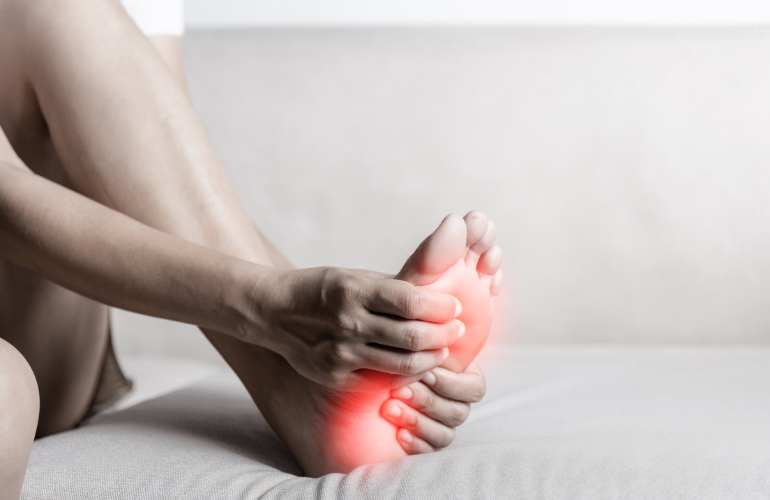Feet First with Diabetes
If you live with diabetes you are at a higher risk of experiencing problems with your feet. This is because diabetes can damage the nerves and blood supply in your extremities, specifically your legs and feet.
Nerve damage makes it hard to feel sensation in your feet which means you might not notice a pressure injury, blister, corn or callous. Pain is one way your body warns you that something is wrong, but a lack of sensation in your feet means the red flag of pain is not recognised. When blood supply to your feet is also affected it means any injuries or cracks in the skin that you experience will take longer to heal, and leave you prone to infection.
To avoid problems, it is important to take good care of your feet.
1. How to Protect Your Feet
A good place to start is by checking your feet daily. Check all areas, especially on the sole of your foot and between each toe. If you can’t see the sole ask someone else to check or place a mirror on the floor and hold your foot above it.
Look for:
- Dry skin, especially around the heels.
- Excessive moisture, especially wet, white peeling skin in between the toes.
- Cracked skin, blisters or ulcers.
- Thickened skin such as calluses or corns.
- Any signs of infection including redness or darker skin than usual.
- Changing toenail colour (e.g. yellowing and/or chalky toenails), a different texture or increased thickness.
2. Warning Signs for Unhealthy Feet
If you experience any of the following, make an appointment with your GP or a podiatrist for further investigation. Early detection and professional help can ensure your feet stay in good shape.
The following can be symptoms of poor blood supply to your feet:
- Numb or cold feet.
- Aches and pains in your feet or legs after walking.
- Slow healing.
- Changes in skin colour.
The following can be signs of nerve damage:
- Numbness or pins and needles.
- A burning sensation.
- Sharp pains or cramps in your feet and legs.
- Being unable to feel sores, cuts or blisters.
- Dry skin.
Tip: When you take off your socks check inside for any signs of blood that may indicate a cut on your foot. Wearing white socks can be helpful for this purpose.
3. How to Prevent Foot Problems
- Avoid walking barefoot
- Wash and dry your feet everyday
- Moisturise feet, heels and lower legs. Recommended products include the Duit range, Dermal Therapy or Plunketts. These specialist creams have a higher level of urea which can help restore smooth and supple skin.
- Avoid putting any cream or oil between your toes as too much moisture between toes can cause the skin to break and an infection may occur.
- Look after your toenails. Cut your nails straight across and file any sharp edges. See a podiatrist if this is difficult for to perform. Tea tree oil can be applied to each nail every second or third day to help prevent infection.
- Keep your feet away from direct heat such as fires, heaters and hot water bottles.
- Avoid tight fitting shoes that can injure your feet and thongs that can leave them exposed to potential injury and damage the skin between your toes.
4. Using Circulation Socks for Diabetes
Socks are also important. Avoid elasticated cuffs and check for pressure marks on your ankles. Seamless socks will reduce the risk of rubbing and blisters. Moisture-wicking materials help keep your feet dry so that excess moisture doesn’t form a breeding ground for fungal infections.
5. Visit a Podiatrist
If you're experiencing any discomfort or issues with your feet, it's important to see your doctor or podiatrist as soon as possible. Podiatrists are experts in diagnosing and treating problems with feet and lower limbs, so they'll be able to offer the best advice and care. Make sure you see a podiatrist at least once a year as part of your annual health check-up. If you are living with diabetes you are entitled to five subsidised visits per calendar year to an allied health professional, including a podiatrist. To get your subsidised visits talk to your doctor about a GP Management Plan.
Want to know more? See our other foot blogs; Peripheral Neuropathy: Everything You Need to Know and Diabetes and Feet: 5 Ways to Take Care of Them.




